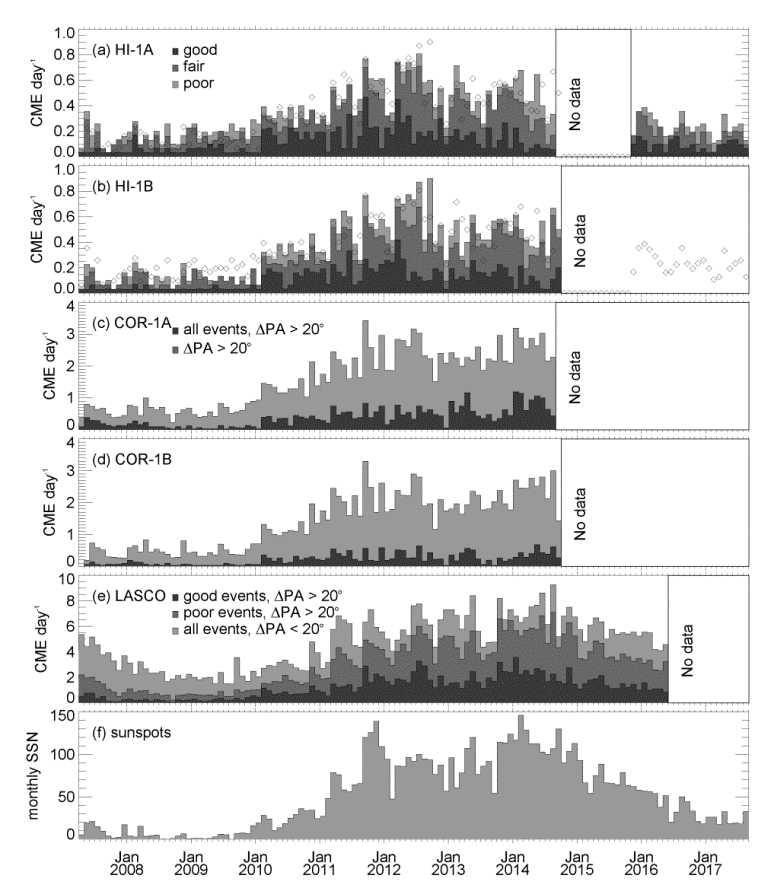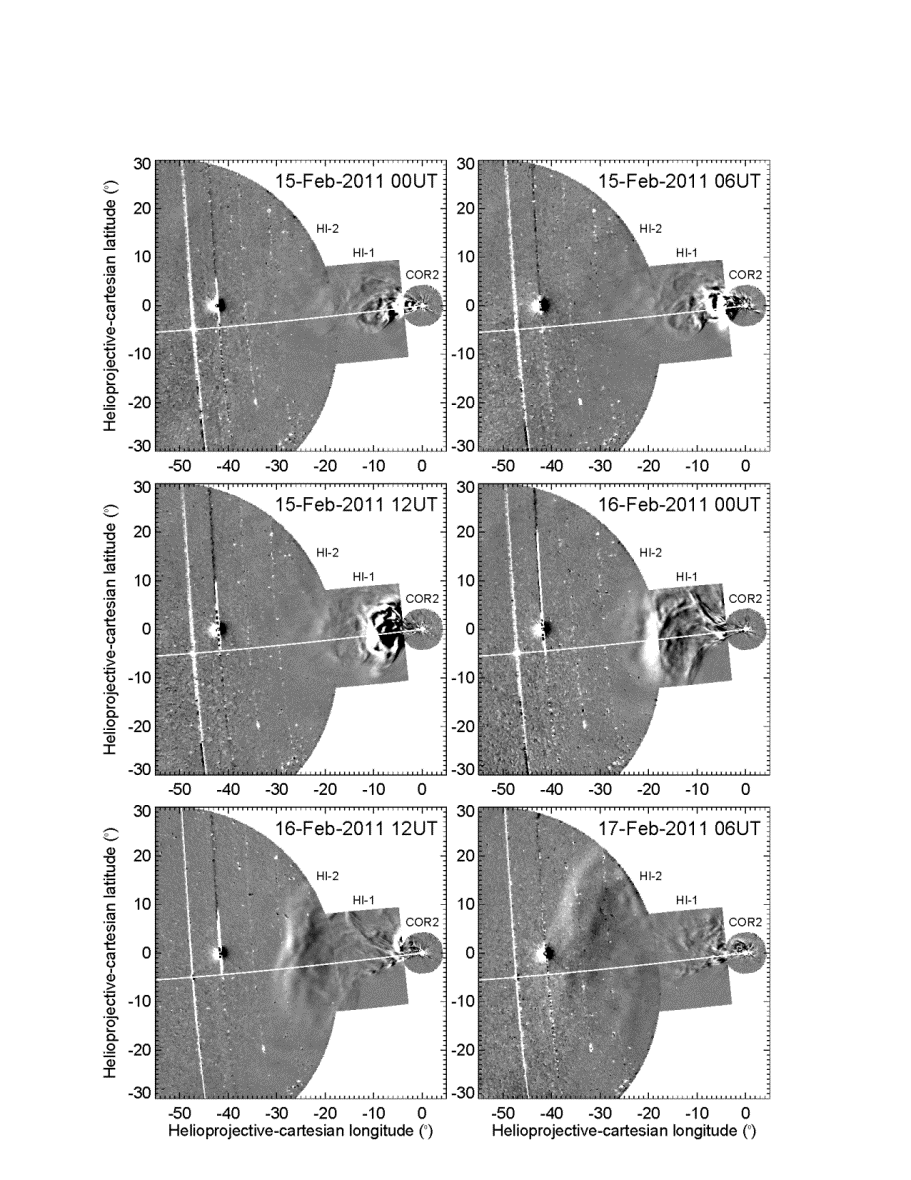
The Heliospheric Imager for the NASA STEREO Mission
Part of the SECCHI Consortium
An analysis of inconsistent visible-light imaging observations
Coronal Mass Ejections (CMEs) can impact human activities and technological assets and are continuously monitored by dedicated space weather operations centers. A study by Harrison et al. 2023, Space Weather 21, 10.1029/2022SW003358 identifies inconsistencies between the identification of potentially Earth-directed CMEs in observations made from a near-Earth vantage point and those made from off the Sun-Earth line. Almost a third of a set of potentially Earth-directed CMEs that were identified in an off Sun-Earth line heliospheric imager catalog from 2011, which were subsequently evidenced as Interplanetary CMEs (ICMEs) in in-situ data near Earth, were not cataloged as halo or partial halo events in near Earth coronagraph imagery. Given the number of such discrepant events, compared to the total number of ICMEs recorded near Earth in 2011, it is important to understand the inconsistencies and to ensure that future space weather monitoring strategies cater for them.

The first comprehensive catalogue of CMEs in the heliosphere
Harrison et al. 2018, Solar Phys. 293, 77, 10.1007/s11207-018-1297-2 present, and analyse, the first catalogue of heliospheric CMEs based on STEREO/HI-1 imagery. The authors present distributions of the basic observational CME parameters – namely occurrence frequency, central PA and PA span – from over 2000 CME detections over the majority of solar cycle 24 (April 2007 to August 2017). These distributions are compared to those of CMEs at coronal altitudes, and sunspot number, providing valuable insights to the launch and propagation of CMEs.
Analysis was based on the HICAT catalogue, which was generated within the EU FP7 HELCATS project.

Using heliospheric imaging for space weather application
A landmark paper Harrison et al. 2017, Space Weather 15, 985, 10.1002/2017SW001633 considers lessons learnt from published studies of heliospheric imagery in the context of its application to space weather. This work reviews a cross section of scientific analyses that have exploited STEREO/HI imagery, in particular, and discusses their relevance to operational predictions of CME arrivals at Earth and elsewhere.
The authors assert that the potential benefit of heliospheric images to the provision of accurate CME arrival predictions on an operational basis, although as yet not fully realized, is significant and assert that heliospheric imagery is central to any credible space weather mission, particularly one located at a vantage point off the Sun-Earth line.

